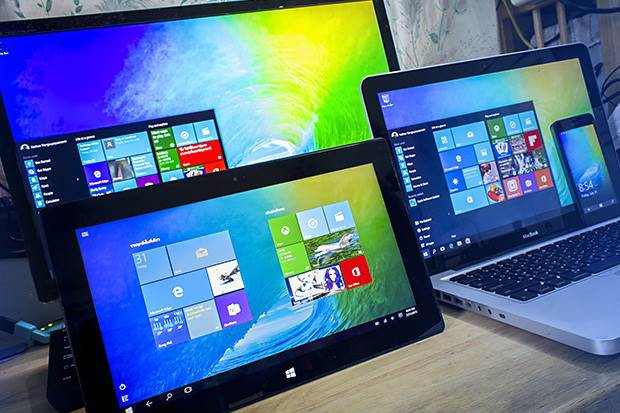While many individual users are still pondering whether to adopt the Windows 10 operating system, a Microsoft enterprise client seems to have no such misgivings. The U.S. Department of Defense is planning to standardize 4 million computers on Windows 10, marking the largest deployment yet of the OS in an enterprise setting, according to Microsoft
Microsoft said it expects to have all of the DoD’s computers that are currently running older versions of Windows upgraded to Microsoft’s new OS in about a year.
Surface Adoption
The DoD’s recent order follows a November order to upgrade systems in its Combatant Commands, Service Agencies, and Field Activities to Windows 10. The government’s objective is to better protect against security breaches while also reducing IT costs by running a single platform department-wide. Windows 10 is said to offer better protection against security flaws than previous Windows operating systems.
Microsoft has set a public goal of having 1 billion devices worldwide running Windows 10 by late summer 2018. Several other reports have indicated that about half of all enterprise customers will integrate Windows 10 sometime this year.
More than 76 percent of Microsoft’s enterprise and education customers are in active pilots of Windows 10, and more than 200 million active devices are running the operating system.
In a related item, the government has certified Microsoft’s Surface 3, Surface Pro 3, Surface Pro 4, and Surface Book tablets to be included on the Defense Information Systems Agency Unified Capabilities Approved Products List, meaning that defense-related agencies can buy and use products from the Surface line.
Security Features
As the Department of Defense upgrades, it has the option of incorporating some of Windows 10’s security features, said Yusuf Mehdi, corporate vice president of Microsoft’s Windows and Devices Group, in a blog post.
Those include: the Windows Hello and Windows Passport features that agencies can use to identify individuals and restrict access through integrated multi-factor authentication using biometric mechanisms like facial recognition or fingerprints; enhanced threat resistance and device security using such familiar features as Secure Boot, which helps prevent malware from embedding itself within hardware or starting before the OS, and Trusted Boot, which helps maintain the integrity of the rest of the operating system.
Mehdi characterized the OS upgrade as “an unprecedented move for a customer with the size and complexity of the DoD.” No figures have been released regarding how much the migration will cost the DoD, which spends about $ 44 billion on IT and cybersecurity annually.
Image credit: Microsoft.





![[Video] Samsung Outlines AI Vision at The First Look 2026](https://loginby.com/itnews/wp-content/uploads/2026/01/Video-Samsung-Outlines-AI-Vision-at-The-First-Look-2026-100x75.jpg)

